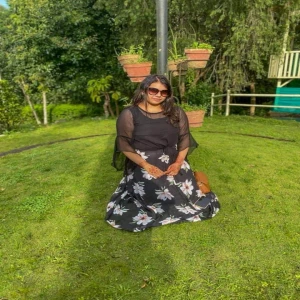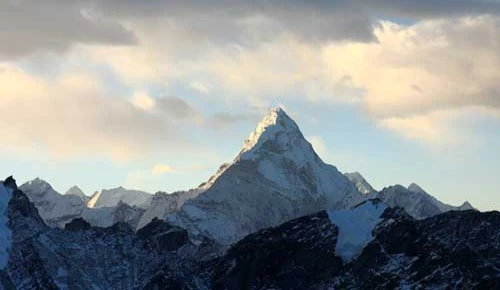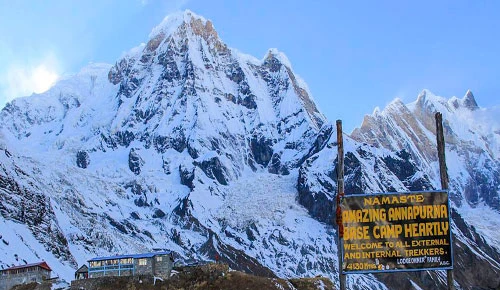Explore Communities and culture in Annapurna Region of Nepal
The warm hospitality of the local people and an amazing cultural experience are what sum up the Annapurna region.
Traveling to the Annapurna region is not just about the breathtaking scenery but also about experiencing the local cultures and traditions, as well as interacting with the local people and peeking into their lifestyle.
This blog explores the culture and people of the Annapurna region. So, let’s dive into the rich culture and the kind people of this region.
Table of Contents
Annapurna Region: Where Adventure Untamed Awaits
The Annapurna region of Nepal's Himalayas is widely known for its well-established trekking routes, varied cultures, and breathtaking alpine scenery. This region, named for one of the tallest peaks on Earth, Annapurna, attracts tourists and nature lovers from all over the world.
There are treks in the Annapurna area for every skill level, from very easy travel to strenuous adventures. The Annapurna Base Camp trek, which takes you to the base of the magnificent Annapurna peaks, and the Annapurna Circuit trek, which circles the whole Annapurna massif, are two well-liked itineraries.
Trekkers will come across scenic settlements along these paths, each home to a distinct ethnic group with rich cultural traditions, such as the Gurungs, Magars, or Thakalis. Along the paths are teahouses and guesthouses that offer lodging and a kind welcome to tired tourists.
With its impressive snow-capped peaks, lush woods, tumbling waterfalls, and terraced farms, the area has unmatched natural beauty. Trekkers make lifelong memories with their amazing views of famous mountains like Dhaulagiri, Machapuchare, and Annapurna.
Apart from hiking, there are other outdoor activities, including mountaineering, rock climbing, and whitewater rafting, in the Annapurna area. The region attracts tourists with its unmatched beauty and cultural diversity, whether they are looking for adventure or peace in the middle of nature.
People of the Annapurna Region
Several ethnic communities, each with its own unique culture, language, and customs, can be found in Annapurna. The following are some of the major ethnic groups in the this region:
Gurungs Community
One of the main ethnic groups living in Nepal's Annapurna region is the Gurungs, who have made substantial contributions to the region's cultural legacy.

The Gurung people are well-known for their bravery, determination, and strong feelings of solidarity. Their rich past has a complex connection to the untamed environments they live in. Gurungs are well-known for their colorful cultural customs, which include festivals, dances, and songs.
- Culture: Due to their close ties to the organic rhythms of the mountains, Gurung music is generally characterized by rhythmic beats played on instruments like the tungna, a stringed instrument, and the madal, a hand drum.
- Ethnic Cuisines: Ethnic Cuisine: Locally grown, fresh foods are the mainstay of the Gurung diet. Grains such as rice, corn, and other veggies, including turnips, potatoes, and spinach, are staples. Their specialty meals include 'Kukhura ko Masu,' a spicy chicken curry, and 'Sisnu ko Saag,' a soup made with nettle leaves. Foods that have experienced fermentation, such as the millet beer known as "Chhaang," are traditionally served during festivals and other special occasions.
- Festivals: Gurung holidays like Ghatu Naach, a vibrant masked dance, and Tamu Lhosar, which celebrates the Gurung New Year, provide insights into their spiritual beliefs and social ties. These celebrations are happy times for villages and families to join together to celebrate their heritage and give thanks for the benefits of living in the mountains.
- Occupations: Apart from their cultural contributions, Gurungs are expert farmers who work terraced crops on the steep Himalayan slopes. Many Gurung villages rely heavily on agriculture, and they can flourish in difficult alpine terrain because of traditional traditions that have been passed down through the years.
- Hospitality: Gurungs are well known for their warmth and friendliness toward outsiders. Trekkers can anticipate being welcomed into Gurung houses along the Annapurna hiking trails. Here, they will be offered traditional hospitality and filling meals, which will enhance their experience of the area.
Magars Community
One of the major ethnic groups in Nepal's Annapurna area, the Magar people, have a long history of resiliency and a rich cultural legacy.

The Magar people, who mostly live in Nepal's western and central highlands, are renowned for their skill in agriculture, close-knit families, and distinctive customs.
- Occupations: The rugged terrain of the Annapurna area consists mainly of terraced farms. Their economy is centered on agriculture and basic foods, including wheat, rice, maize, and millet, are consumed there. The Magar people pursue farming activities in addition to maintaining a strong sense of community and cultural identity.
- Culture: Magar Kham, their native tongue, is a member of the larger Tibeto-Burman language family. Magar communities have changed as a result of urbanization and modernity, yet they have managed to hold onto their customs and cultural legacy.
- Ethnic Cuisines: The distinctive tastes of Magar cuisine are often savored in dishes like "gundruk," which is fermented leafy greens, and "dhido," a typical Nepali meal prepared from maize or buckwheat flour.
- Festivals: A vital part of the Magar people's cultural activities is their traditional festivals, rituals, and ceremonies, which frequently incorporate aspects of primitive beliefs, Buddhism, and Hinduism. "Ghatu," which is celebrated yearly with music, dancing, and food, is one such celebration. People in the village gather to perform traditional dances, such as the "Maruni" and "Sorathi," to the sounds of drums and other musical instruments during Ghatu.
- Hospitality: They offer a cordial welcome and the highest regard to visitors to their houses. During their tour, guests are frequently provided with nice lodging and traditional Magar cuisine. The ability to make visitors feel at home and to provide them with the warmth and generosity for which Magar hospitality is known is something that the Magar people take great pleasure in.
Thakalis Community
A well-known ethnic group in Nepal's Annapurna area, the Thakali are renowned for their skill in cooking and for having a rich cultural history.
The Thakalis, who are from the Mustang district's Thak Khola valley, have made a name for themselves as important figures in the area's hospitality sector.

The Thakali people are well known for their contributions to the infrastructure of renowned trekking routes such as the Annapurna Circuit trek and the Annapurna Base Camp trek.
Many of the teahouses offer necessary services and lodging along the route. The majority of the owners of these teahouses are Thakali families.
- Foods: Thakalis greet tired tourists with open arms and serve filling dishes like buckwheat pancakes, dhido (a traditional millet flour dish from Nepal), and Thakali dal bhat (rice and lentil soup).
- Culture: The Thakali people have retained their unique cultural customs and traditions across decades, even outside of their involvement in the hospitality business. Their language, dress, and religious beliefs are all distinctive; many follow a combination of Tibetan Buddhism and Bon, an old local religion.
- Festivals: Celebrations of ancient dances, music, and rituals that have been passed down through the thousands of years are held at festivals like Dashain and Tihar.
- Hospitality: Warm hospitality and generosity are well-known among the Thakali people. It is deeply rooted in their culture to welcome guests with open arms. Upon arrival, guests are often greeted with a traditional scarf (khada) and given refreshments. Thakali households take great pride in providing their guests with delectable meals.
The Thakali people have a strong sense of community and pride in their tradition, even in the face of industrialization and globalization. They are an essential part of Nepalese society, having made endless contributions to the cultural and economic tapestry of the Annapurna area.
Tamangs Community
One of Nepal's native ethnic groups, the Tamangs, have a significant population that lives in the Annapurna area. They stand out in Nepal's varied environment due to their own cultural identity, language, and rich customs.

Historically, the Tamang people have inhabited Nepal's hilly and mountainous regions, which include nearby areas of the Annapurna Peak.
- Occupations: The Tamang people have traditionally made their living mostly from agriculture. They have also been traders, herders, and farmers. Crops including rice, millet, maize, and wheat are grown on terraced fields cut out of the rocky landscape. They also raise animals, including sheep, goats, and yaks, grazing on the high-altitude meadows.
- Culture: The centuries-old practice of Tibetan Buddhism has had a profound impact on Tamang culture. Buddhist stupas and monasteries are common in Tamang communities and act as the community's spiritual hubs. Tamang culture revolves around festivals and religious rites, which are characterized by vibrant dances, customs, and tributes to the gods.
- Ethnic Cuisines: 'Sel Roti,' a classic rice-based bread that's frequently offered at festivals and other events, is one of the distinctive foods. Other well-liked Tamang treats include "Gundruk" (fermented leafy greens) and "Sha Phaley" (fried pastry stuffed with pork).
- Festivals: Throughout the year, Tamangs celebrate a wide range of festivals that provide an insight into their religious beliefs and cultural past. The most important celebration is called "Lhosar," which celebrates the Tamang New Year with vibrant ceremonies, dancing, and feasts. "Sakela" is another festival that is celebrated with traditional dances, music, and group feasting.
- Hospitality: The culture of the Tamang people is rooted in hospitality. 'Khada', or white ceremonial scarves, are given as a token of hospitality and are considered with the highest reverence. Tamang homes take great pleasure in providing traditional cuisine to visitors and making sure they are comfortable while visiting.
Tamang people have also entered the tourist industry, taking advantage of the growing demand for trekking in the Annapurna region.
Homestay accommodations are now available in many Tamang communities along trekking routes, giving guests the chance to directly experience genuine Tamang hospitality and culture.
Brahmins and Chhetris Community
Two of the most influential social groups in Nepalese society are the Brahmins and the Chhetris. Although they may not be as prevalent in the Annapurna region as some other ethnic groups, they nonetheless have a big impact and add to the region's culture.
Hinduism is the most common religion in Nepal, and both Brahmins and Chhetris practice it. They also take part in religious festivals, rituals, and ceremonies.

Brahmins and Chhetris play important roles in the social and economic life of the Annapurna area, adding to its cultural variety, although they are a smaller ethnic group than other ethnic groups like Gurungs and Magars.
Their presence weaves another thread into the complex web of cultures and ethnicities that makes the Annapurna area an intriguing and varied tourism and trekking destination.
Culture of the Annapurna Region
- Ethnic Diversity: Gurungs, Magars, Thakalis, Tamangs, Brahmins, and Chhetris are just a few of the many ethnic groups that call the Annapurna area home. Every group adds to the region's cultural diversity with its own distinct customs, language, attire, and social behaviors.
- Religious Traditions: Buddhism is the primary religion in the Annapurna region, while Hinduism is also widely practiced there, particularly in the parts nearer the Tibetan border. The terrain is dotted with stupas, monasteries, and temples that are the hubs of many spiritual and religious activities. Holidays like Dashain, Tihar, and Buddha Jayanti are widely observed and serve as significant dates for ceremonies and group get-togethers.
- Traditional Practices: Terraced farms beautify the hillsides of the Annapurna area, where agriculture plays a major role in daily life. Subsistence farming is the primary source of income for many people, and traditional farming techniques are still widely used. Important customs that have been carried down through the years include weaving, ceramics, and woodcarving.
- Cuisine & Hospitality: The Annapurna region's residents are renowned for their kind greetings to guests. Along trekking paths, teahouses and guesthouses provide tired hikers with a place to stop and refuel, typically with great local food. Both residents and hikers like dishes like thukpa (noodle soup), momos (dumplings), and dal bhat (lentil soup with rice).
- Music and Dance: In the Annapurna region, traditional music and dance are essential components of cultural festivities and customs. At festivals and social gatherings, instruments like the sarangi (a string instrument) and madal (a hand drum) frequently accompany folk songs. Vibrant traditional dances that highlight the region's rich cultural legacy include the Gurung Ghantu and Tamang Selo.
Annapurna: Where Mountains Meet Culture and Hearts Find Connection
To sum up, the Annapurna Region is a fascinating mosaic of strong individuals from many cultural backgrounds.
Every tribe adds something unique to the colorful tapestry of Nepalese civilization, from the courage of the Gurungs to the business energy of the Thakalis.
Travelers experience rich cultural traditions and kind hospitality. Not only that, but they will also experience stunning views, as they visit this region.
The Annapurna Region welcomes guests to set out on a voyage of discovery where the fusion of culture and environment produces a once-in-a-lifetime encounter.








